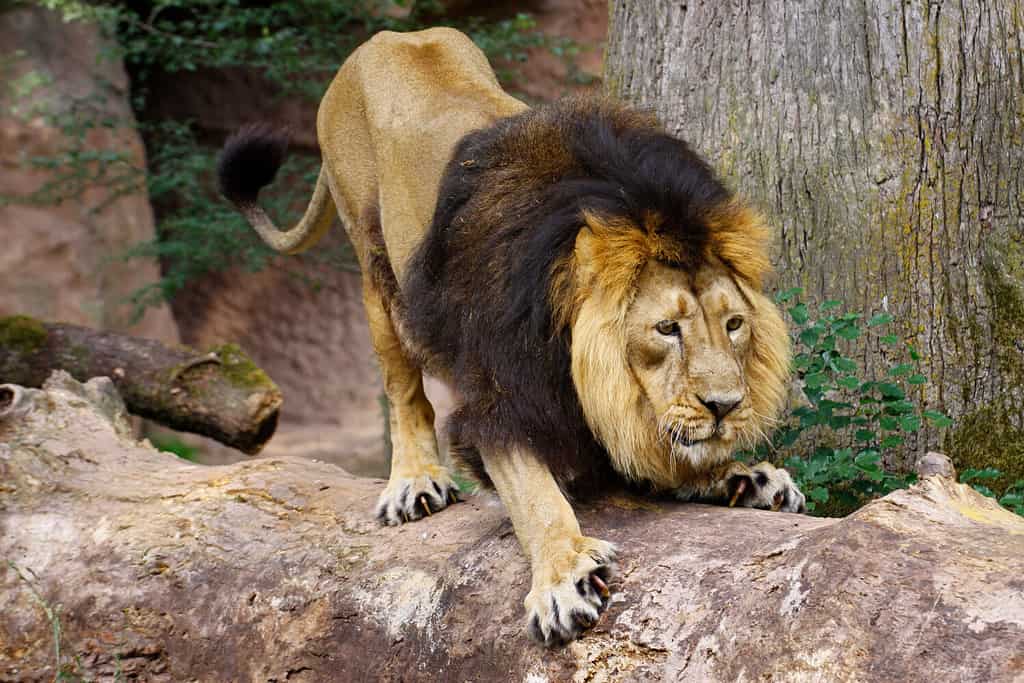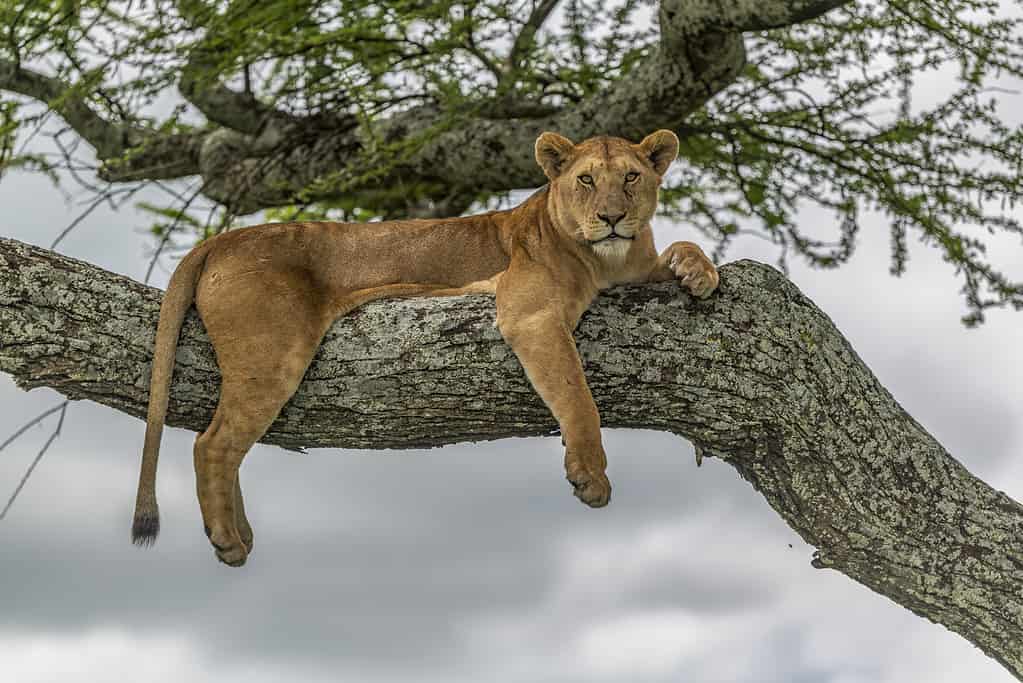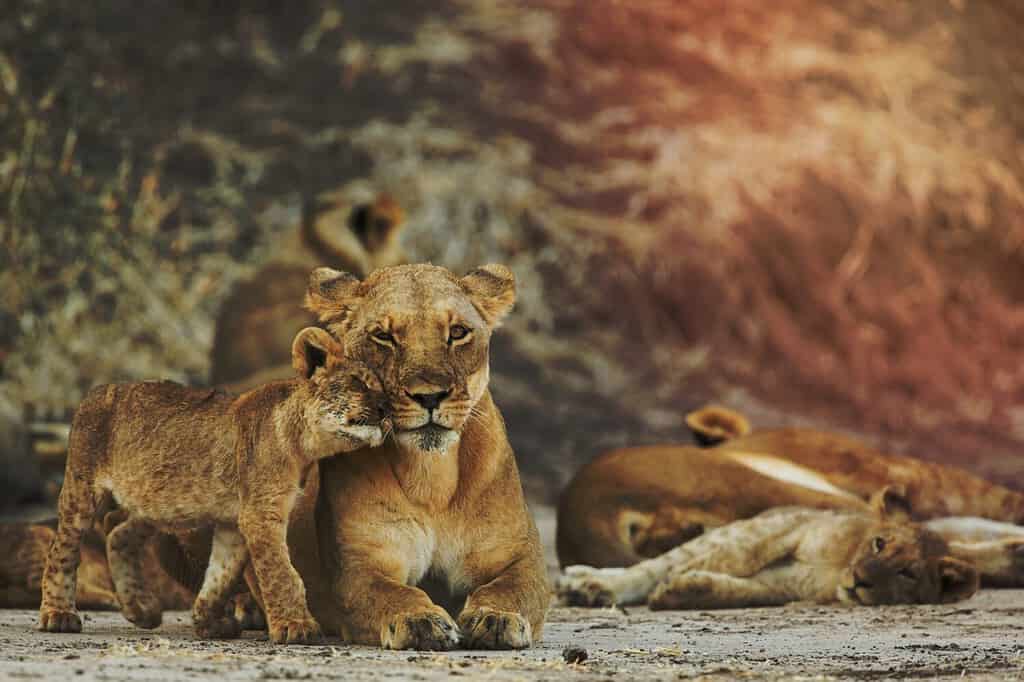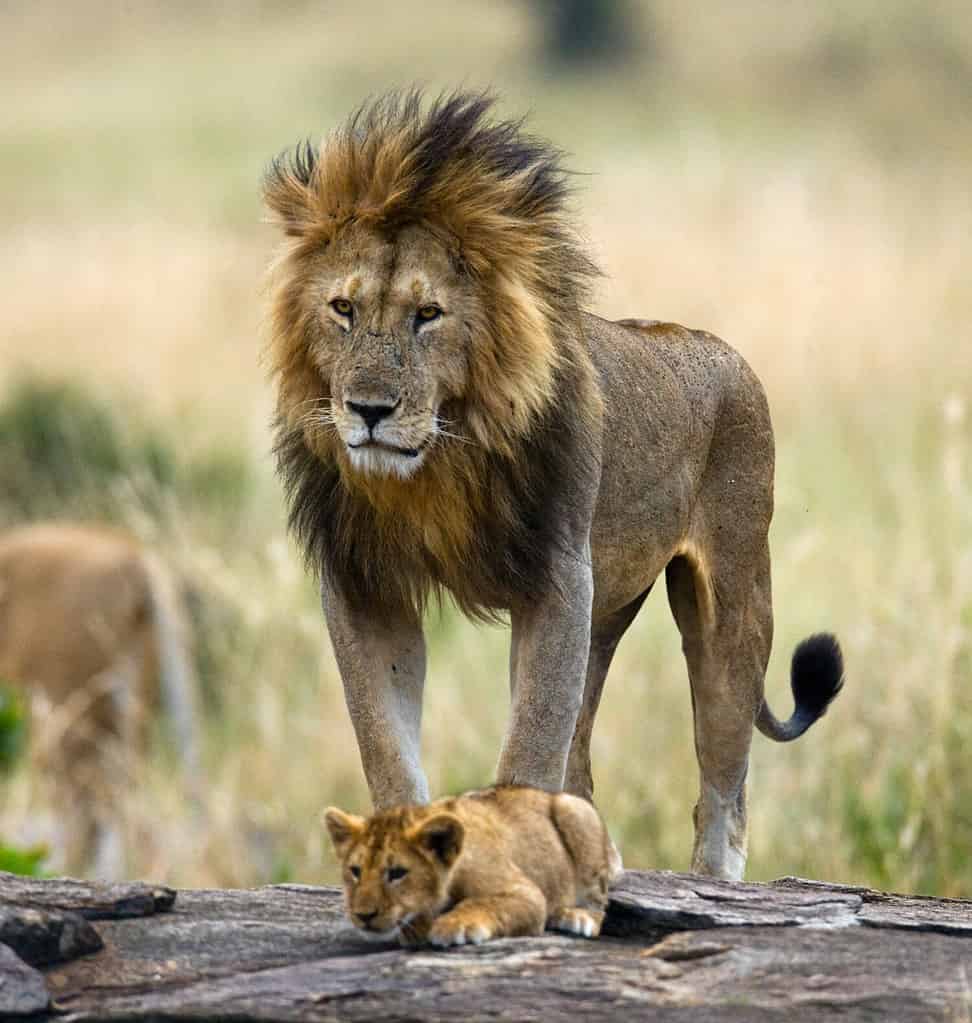Lions, scientifically known as Panthera leo, are the second largest member of the big cat species. This species includes lions, tigers, jaguars, and leopards. Known for their size, strength, and intelligence, lions are one of the top apex predators in the animal kingdom. In fact, their unrivaled might, power, and majestic appearance is what gave them the reputation as ruler or “King of the Jungle.”
Lions live in areas like grasslands, savannahs, open plains, etc. While the lions we’ve come to know reside in Africa — particularly in sub-Saharan Africa, there is a small subspecies known as the Asiatic lion that exists in India’s Gir Forest.
These large cats form strong social groups called “prides,” which allow them to protect their territory from invaders and share hunting responsibilities. While both male and female lions (lionesses) share many similarities, they possess many key differences that set them apart and make them unique. So, what are those differences?
5 Key Differences Between Male and Female Lions
1. Males vs. Females: Anatomy

Adult male lions typically weigh between 330 and 550 pounds.
©R. Maximiliane/Shutterstock.com
Lions have strong, muscular bodies complete with sharp, retractable claws and powerful jaws that help them take down large prey such as wildebeest, zebras, and warthogs.
Males
Males begin to grow fuzz around their necks at about one year old. They develop a large, bushy mane that ranges in color (yellow-gold, brown, red, etc.) and size as they mature. Manes are a sign of strength — the larger the better — and can intimidate rival males while impressing potential female mating partners.
Males grow to about 10 feet long and can weigh anywhere between 330 and 550 pounds. The largest lion ever recorded weighed in at an astonishing 827 pounds, which is bigger than your average grizzly bear!
Females
Lionesses are smaller in stature and have a short coat. Their coats vary in color from yellow to dark brown or even orange-brown. Females grow up to 9 feet in length and weigh between 265 and 400 pounds. They might be smaller, but lionesses are sleeker and quicker than male lions. They often use this to their advantage while on the hunt.
2. Males vs. Females: Physical Prowess

Lionesses reach impressive speeds of up to 33 miles per hour.
©iStock.com/Jennifer Watson
Males
Males are significantly larger and more powerful than females. Their size, strength, and force allow them to protect and patrol their territory from rival males. Their physically imposing presence also deters scavengers from stealing their food after a hard-earned kill. Given their size advantage, males can swoop in and steal rival predators’ kills as well during unsuccessful hunting periods.
Females
While lionesses are much smaller in stature, their size gives them strategic advantages. They are lighter and more agile than males, which helps them maneuver and outrun their prey. In fact, females can reach speeds up to 33 miles per hour. Working together, lionesses use their speed and agility to ambush and corner unsuspecting prey.
3. Males vs. Females: Behavior

Male lions use their imposing strength to take down large prey such as
buffalo
or elephants.
©AB Photography/iStock via Getty Images
Lions are unique in the big cat world for the alliances they form in prides. Prides range in size, with the average being 15 members. These groups will typically have control of their respective territory without interference from rival prides. Males and females, however, present different behavioral traits that set them apart.
Males
One of the primary differences between male and female lions is their temperament. Males are dominant in nature. As they mature, males are often pushed out of the pride from rivals looking to take over the group and mate with females. Being banished from the pride can leave males isolated and vulnerable, so young lions will often form alliances with other estranged males to hunt and protect a region. In a show of dominance, males will let out a loud, deep, and powerful roar to ward off invaders, establish authority in their pride, or signal a mate.
Females
While dominance isn’t associated with lionesses, they form and maintain strong social bonds built on collaboration. Female pride members are genetically related, so they have an incentive to look after and protect each other’s young. Lionesses use their strength in numbers to keep rival females out of their territory.
4. Males vs. Females: Roles

Lionesses are known to nurse each other’s cubs, which is a behavior called alloparenting.
©orinaceanu99/Shutterstock.com
Lions’ physical attributes allow them to keep control over their habitat. However, males and females assume very different but equally important roles that help them maintain a thriving pride.
Males
As mentioned, males use their power to assert dominance over their domain. They might not be caretakers, but they are protectors. Males are highly territorial and don’t mind confrontation. Through this mentality, they are able to protect cubs from outside threats, which keeps the pride intact and prevents a hostile takeover from invader coalitions. Their physical traits aid the group while hunting as well. For large prey like buffalo or elephants, males use sheer power and force to help lionesses secure a kill.
Females
While males are capable assassins, lionesses do the bulk of the hunting. They lead by committee, often hunting together in groups using their collective speed, strength, and agility to corner prey. Lionesses also play the role of nurturers. They provide, protect, groom, and nurse their young.
Females in prides typically give birth around the same time and nurse each other’s cubs as if they were their own. This behavior is called “alloparenting,” which ensures the group remains strong in number. In communal fashion, they also pitch in to protect cubs from dangers like outside predators and aggressive male lions. This is important because cubs are at their most vulnerable when they are young, often suffering from premature death during early stages of development. In fact, infanticide by conquering males is one of the most common forms of death for cubs.
5. Males vs. Females: Reproduction

Lions are polygamous, mating with more than one partner over the course of their lives.
©GUDKOV ANDREY/Shutterstock.com
Male and female lions share some similarities in regard to reproduction. They are both polygamous, which means they mate and breed with more than one partner during their lifespan. However, they also serve many different biological functions.
Males
Male lions can run into challenges when trying to breed with females. Many males, due to expulsion from their pride, become nomads. It is very difficult for nomads to find mating partners because of competition between rivals and preestablished pride leaders. In some cases, males remain nomads for life due to scarcity. For males paired with a mate, they will use scent to determine if a female is in her reproductive window. Paired lions can copulate up to 50 times in 24 hours, and males will fiercely guard their mate while they are in this cycle to secure paternity against rival males.
Females
Female lions go through an intense reproductive cycle known as “estrus,” which means they are sexually receptive and ready to pair for mating. They can mate every 20-30 minutes in this state, and this cycle lasts between three and four days. Females will reenter estrus approximately two weeks later if they fail to conceive. Lionesses will sneak away to conceive after their four-month gestation period, ensuring that their vulnerable cubs are safe, hidden, and protected. She will give birth to up to six cubs who will remain hidden for the first 5-6 weeks as they get stronger and more independent.
Male lions guard and protect their pride from rival males.
Recap
As you can see, male and female lions share some similarities, but they also serve very different functions individually and in groups. Male lions were designed to protect, lead, and maintain order amongst the pride. Lionesses, on the other hand, are meant to provide a nurturing and communal environment for their cubs and the pride as a whole. Both males and females are faced with difficult challenges, but they are equally competent and contribute to the overall safety and sustainability of their pride.
The photo featured at the top of this post is © Wicker Imaging/Shutterstock.com
Thank you for reading! Have some feedback for us? Contact the AZ Animals editorial team.







